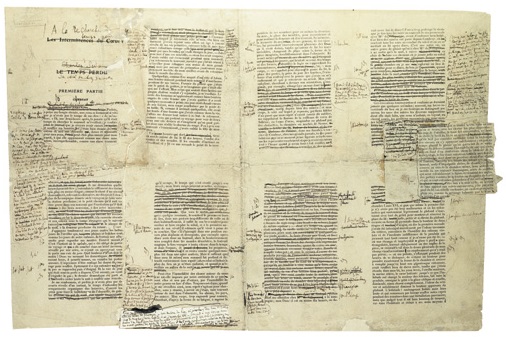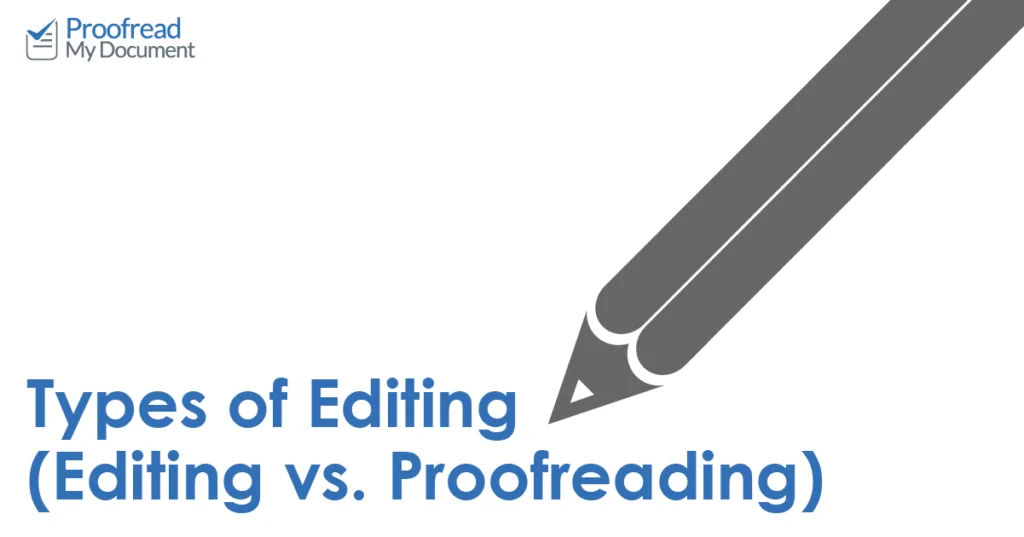Here at ProofreadMyDocument, we offer editing and proofreading services. But what exactly is the difference between editing and proofreading? And what do these things involve?
In this post, we’re going to look at four types of editing and proofreading:
- Developmental editing (i.e. document-level editing)
- Line editing (i.e. paragraph-level editing)
- Copy editing (i.e. focusing on technical details and consistency)
- Proofreading (i.e. correcting any typos in the final draft)
The lines between these types of editing are not always well defined. But if we look at what each involves, the distinctions should become clearer.
1. Developmental Editing
Developmental editing focuses on the document as a whole, including its structure and content. Sometimes an editor will work with an author from the beginning of a project, but it can also involve substantial revision and restructuring after the author has written a first draft.
Shorter documents will not usually need any developmental editing. But receiving extra feedback early on can help when writing a longer document, such as a book manuscript.
2. Line Editing
Line editing focuses on clarity and consistency of language. The focus here is usually on individual paragraphs rather than the overall structure of a document. It may involve looking for:
- Inelegant sentence structure and word choice
- Content that could be clarified, sometimes including fact checking
- Inconsistencies in the tone or authorial voice
- Parts of the text that could be tighter
- Potential improvements to presentation
A line editor will make some changes directly. In other cases, they will leave a comment for the author and suggest a change. Either way, the aim is to refine the text until you have a final draft.
3. Copy Editing
Copy editing is all about the fine details. It therefore focuses on:
Find this useful?
Subscribe to our newsletter and get writing tips from our editors straight to your inbox.
- Correcting any remaining spelling, punctuation and grammar errors
- Checking for consistent use of spelling, hyphenation, fonts, etc.
- Looking for inconsistencies in the content
There are overlaps with line editing here. But while line editing is about creative decisions (i.e. how something is expressed), copy editing focuses on technical issues (i.e. whether something is expressed correctly). It is therefore usually more limited in scope than line editing.
4. Proofreading
Proofreading should be the final step before a document is published. Traditionally, this was done on ‘galley proofs’ (i.e. rough versions of a text made before mass printing). And in the publishing industry, ‘proofreading’ still refers to checking a typeset text for errors missed during editing.

In practice, though, modern proofreading often involves elements of editing. For instance, as well as looking for typos, a proofreader may suggest ways to improve clarity or concision. Nevertheless, proofreading is still most useful at the end of the main editing process. If a proofreader feels they are making too many changes at this stage, they may suggest further editing.
How to Find the Right Editor
There are many types of editing and proofreading. When hiring an editor, you therefore need to think about what you want for your document.
Terminology can be difficult here. Both developmental and line editing, for example, are sometimes known as ‘substantive editing’.
Thus, if you ask for ‘substantive editing’, different editors may have different ideas of what it means. This means you should check what services an editor offers before working with them. You can also request a specific service if you know what you need.
For instance, we focus on copy editing and proofreading. But if you have any requests for how we should edit your work, you can drop us an email or leave us instructions when uploading a document.



